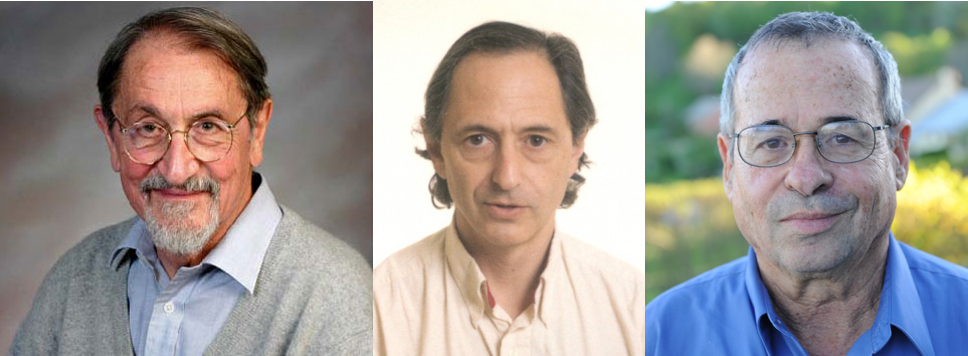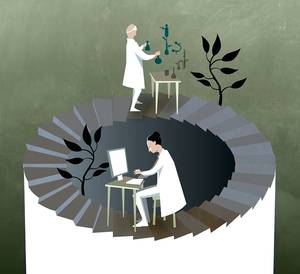M. Karplus, M. Levitt and A. Warshel will receive the Nobel Prize in Chemistry for developing models of chemical reactions
2013/10/09 Carton Virto, Eider - Elhuyar Zientzia Iturria: Elhuyar aldizkaria

Martin Karplus, Michael Levitt and Arieh Warshel are the 2013 Nobel Prize in Chemistry, according to the Nobel Foundation, “for the development of the pathways to bring Newton’s classical physics and radically different quantum physics to good use.”
The three winners have worked on the development of computer simulation programs for chemical reactions. At present, these programs are a common tool in chemical laboratories, through which all types of chemical, industrial and biological reactions and processes are simulated. These programs are the result of the revolutionary work done by Karplus, Levitt and Warshel in the 1970s.
The revolution was to unify classical physics and quantum physics in the same program. And it is that until then, either they were based on classical physics, or chemists had to choose programs based on quantum physics. And each had its advantages and limitations.
Those based on classical physics had the capacity to calculate and process large molecules, they were good to represent how atoms are placed in the molecules, but they could not be used to represent and calculate chemical reactions, since the scale of the chemical reaction is the field of quantum physics. To represent the chemical reactions in the computer, the chemicals had to resort to programs based on the theory of quantum physics, where the limitation was computational capacity. In fact, the computer had to process all the electrons and atomic nuclei of the molecule, which, in the 1970s, meant in practice that only very small molecules could be simulated by computer.
The best of two worlds

Karplus, Levitte and Warshel collected in a single program the best of two worlds. The result was published in 1976: the program applied quantum physics models in the active area of the molecule, where the chemical reaction occurs, and classical physics models in the fields of the non-active molecule. Thus, with a reasonable time and a computational capacity, the possibility of simulating reactions and chemical processes in the computer was opened.
Classical physics and quantum physics are at Harvard University in 1970, when Levitt, having just completed his doctoral thesis, moves from Israel to the United States and starts at the Karplus laboratory. The Karplus team had developed computer programs based on quantum physics to simulate chemical reactions. Levitt, for his part, developed in Israel a program based on classical physics, capable of modeling all types of molecules, together with the third award-winning Warshel, and also the largest biological molecules.
Between 1970 and 1972 Karplus and Levitt worked together, taking as a model the retinal molecule of the retina (a variant of vitamin A). One characteristic of this molecule is that it has free electrons, which are not attached to a certain atom and are free to move through the molecule. Precisely when light affects the retina, these electrons absorb energy and their appearance changes. Taking this molecule as a model, Karplus and Levitt developed a completely innovative program: the program applied quantum physics models to make calculations about free electrons and classical physics to make those of all other electrons and nuclei. For the first time, the two worlds met in a single effective program. It was a pioneering program in the management of molecules with mirror symmetry.
The next step, and the final one, coincided with Levitte and Warshel, after rejoining Cambridge in 1972. The enzymes, the causes of the chemical reactions that occur in living beings, were analyzed and the objective was pursued in 1976: they published the first computer model of an enzymatic reaction. And the program developed for it was universal, that is, for any type of molecule.
Their successors are those who are currently used. And the road is not over. Levitte has a dream, “being able to simulate by computer a living being at molecular level”.-> Read the interview by Guillermo Roa de Elhuyar in 2000 to Martin Karplus
Gai honi buruzko eduki gehiago
Elhuyarrek garatutako teknologia




